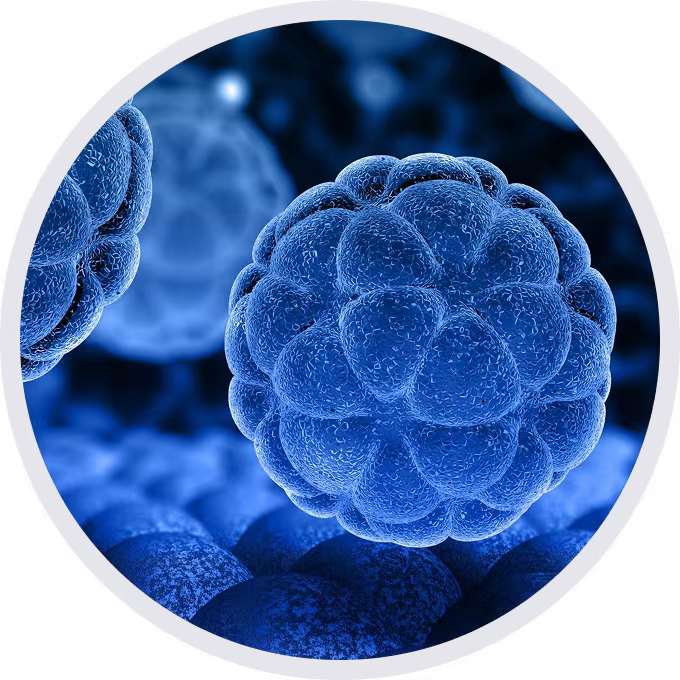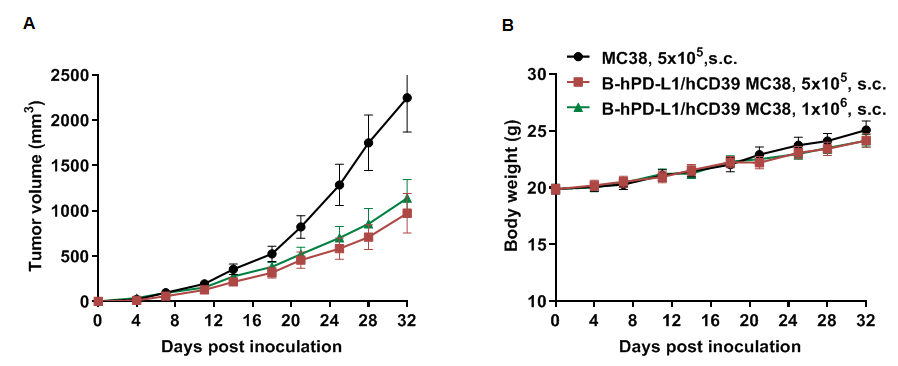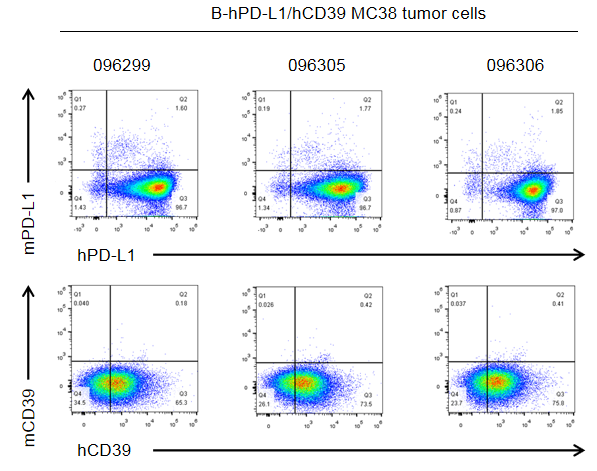


• 321831

| Product name | B-hPD-L1/hCD39 MC38 |
|---|---|
| Catalog number | 321831 |
| Strain background | C57BL/6 |
| Aliases | B7-H, B7H1, PDCD1L1, PDCD1LG1;ENTPD1 (SPG64, ATPDase, NTPDase-1) |
| Tissue | Colon |
| Disease | Colon carcinoma |
| Species | Mouse |
| Application | B-hPD-L1/hCD39 MC38 |
on this page
Gene targeting strategy for B-hPD-L1/hCD39 MC38 cells. The exogenous promoter and human PD-L1 coding sequence were inserted to replace part of murine exon 3. The insertion disrupts the endogenous murine Pdl1 gene, resulting in a non-functional transcript. The exogenous promoter and human CD39 coding sequence were inserted into the targeting vector used in the lentivirus system.
Gene targeting strategy for B-hPD-L1/hCD39 MC38 cells. The exogenous promoter and human PD-L1 coding sequence was inserted to replace part of murine exon 3. The insertion disrupts the endogenous murine Pdl1 gene, resulting in a non-functional transcript. The exogenous promoter and human CD39 coding sequence were inserted into the targeting vector used in the lentivirus system.

PD-L1 and CD39 expression analysis in B-hPD-L1/hCD39 MC38 cells by flow cytometry. Single cell suspensions from wild-type MC38 and B-hPD-L1/hCD39 MC38 cultures were stained with species-specific anti-PD-L1 and anti-CD39 antibody. Human PD-L1 and CD39 were detected on the surface of B-hPD-L1/hCD39 MC38 cells, but not on the surface of wild-type MC38 cells. The 3-A09 clone of B-hPD-L1/hCD39 MC38 cells was used for in vivo experiments.

Subcutaneous homograft tumor growth of B-hPD-L1/hCD39 MC38 cells. B-hPD-L1/hCD39 MC38 cells (5x105, 1x106) and wild-type MC38 cells (5x105) were subcutaneously implanted into B-hPD-1/hCD39 mice (female, 8-week-old, n=8). Tumor volume and body weight were measured twice a week. (A) Average tumor volume ± SEM. (B) Body weight (Mean± SEM). Volume was expressed in mm3 using the formula: V=0.5 X long diameter X short diameter2. As shown in panel A, B-hPD-L1/hCD39 MC38 cells were able to establish tumors in vivo and can be used for efficacy studies.

B-hPD-L1/hCD39 MC38 tumor cells growth of individual mice. B-hPD-L1/hCD39 MC38 cells(5x105, 1x106) and wild-type MC38 cells (5x105) were subcutaneously implanted into B-hPD-1/hCD39 mice (female, 8-week-old, n=8). As shown in panel, . B-hPD-L1/hCD39 MC38 cells were able to establish tumors in vivo and can be used for efficacy studies.

B-hPD-L1/hCD39 MC38 cells were subcutaneously transplanted into B-hPD-1/hCD39 mice (n=8), and on 39 days post inoculation, tumor cells were harvested and assessed for human PD-L1 and CD39 expression by flow cytometry. As shown, human PD-L1 and CD39 were highly expressed on the surface of tumor cells. Therefore, B-hPD-L1/hCD39 MC38 cells can be used for in vivo efficacy studies of novel PD-L1 and CD39 therapeutics.